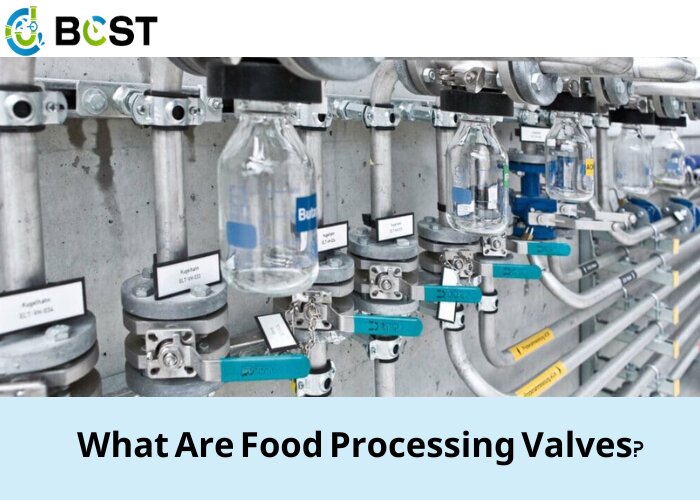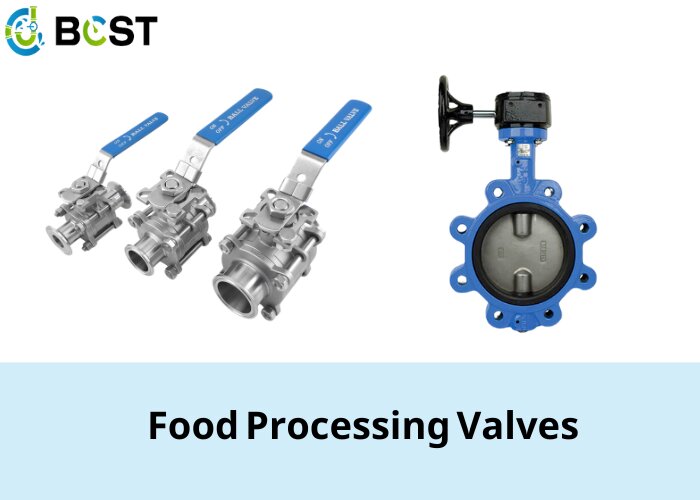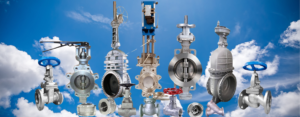
The role of valves emerges as a linchpin in the seamless orchestration of various production stages. Food processing valves are not mere mechanical components; they are the unsung conductors orchestrating the symphony of ingredients, ensuring precise control over the flow of liquids, gases, and powders. From regulating temperatures to maintaining sanitation standards, these valves are the guardians of quality and safety in turning raw ingredients into the diverse array of processed foods that grace our tables.
Valves are essential components of all food and beverage-processing plants, and the quality of the valves dramatically influences the microbiological safety of the food and beverage production process. Valves used by the food and beverage industries can be categorized into two main subcategories: direct contact and utility services. Valves for immediate contact use must comply with strict hygienic requirements.

Direct Contact Valves
As the name implies, these valves directly contact food and drink products, soda, condiments, or other items that flow through tanks and pipes. International and local regulatory standards from various independent organizations regulate direct contact valves. These valves must be manufactured carefully to avoid trapping particles of food or products, allowing bacteria to collect. Materials used must be inert to the product and cleaning chemicals while also being corrosion-resistant and non-toxic. Stainless steel valves are the most popular selection for direct contact valves in the food and beverage industries.
Utility Services
The so-called utility services valve is the second type of valve commonly used in the food and beverage industries. These valves do not come into direct contact with food and drink products but rather handle the supply of steam, water, and other non-food and non-beverage resources necessary for preparing, packaging, or transporting food and drink.
Standards
Food processing safety is always a top priority. Although some standards and regulations govern many aspects of food processing, there are few specific rules, and none are accepted worldwide to deal with the purity and quality of the steam that comes in direct contact with the food or processing food.
Three types of steam are used in food processing. Reading the following will make you realize how critical steam is.
Clean Steam
The maximum grade of steam would be clean steam, generally raised from purified water at a dedicated clean steam generator. This is the region wherein the foods or drinks directly interact with the steam. A secondary generator with a controlled feed water system is utilized to make pure steam. Clean steam demands using stainless steel pipework and components that remove the possibility of corrosion of steam traps, valves, and pipeline equipment. As in other sanitary process piping systems, easy cleaning is paramount in food and drink processing. Therefore, the inside of all piping components, such as valves, must be very smooth and free of pockets or cracks that might entrap fluid or debris or be challenging to remove via regular cleaning procedures. Because of the intrinsic surface roughness of many cast components, this limits their application. Furthermore, electro-polishing or other procedures are required to ensure that the flow of steam is clear of potential areas of fluid entrapment. For corrosion resistance, most food-contact valves are composed of 316 stainless steel or 316L. The food-related valves are forged or machined from bar stock rather than cast, which is a key difference between general-purpose valves and those manufactured for food service. This is due to the fact that cast valves are more prone to porosity, whereas forging is more dense with no buried cavities.
Filtered Steam
Filtered steam is the next stage of steam. Filtered steam is employed in applications that clean the processing system. These are known as clean-in-place (CIP) processes, and they are used to assure the proper level of hygiene in pipes, valves, fittings, and related components in food processing systems. There are mobile products specifically intended for CIP. Like an electric washer for a vehicle or sidewalk, these systems utilize superheated steam with power nozzles to sanitize and remove hazardous food-borne bacteria. Dry vapor steam is the most effective Cleaning solution for food and beverage facilities as most bacteria can be withdrawn at 160deg F. Some of those systems produce constant warm, dry steam, which ranges from 212-240 degrees F. A dehumidification control system consisting of steam traps and filters keeps steam as pure as possible. When additional humidity is necessary in the fluid stream, humidity control systems and valves are all utilized.
Plant Steam
Industrial or plant steam is steam’s lowest grade. The steam doesn’t come into a direct contract with the food or drink product. However, it is used in heat exchangers or for warm water generation, boiling pans, and other areas.
Softened or treated water is usually used for plant steam, is accessible on the valve materials, and is of little concern regarding corrosion.
The typical valves utilized include globe, gate and check valves, or quarter turn valves so long as their design contains no openings where liquids or debris can accumulate.
Although no hard and fast rules about plant steam substances exist, some foods and beverage makers state any steam products, including pressure regulation valves, which provide steam either directly or indirectly to a drink or a food product, have to be made of material sufficiently inert to prevent contamination of the food. Therefore, austenitic stainless steels like 304ss, 316ss, or 316Lss are often used.
Final Thoughts
While numerous valves are employed in the food and beverage industry for tasks like regulating steam lines, their utility extends beyond such applications. Cryogenic processes, such as flash freezing, are integral, occurring either dockside or aboard expansive fish processing vessels. Valves deployed in these scenarios demand exceptional durability to withstand the extreme cryogenic temperatures involved. Butterfly valves, often constructed with 316 stainless steel bodies, are a prevalent choice for flow control, featuring metal valve seats for heightened resilience in harsh conditions. The seamless functioning of modern food processing relies heavily on a comprehensive array of valves, actuators, and controls. As processing techniques evolve, so too does the equipment that facilitates these advancements, underscoring the indispensable role of robust valves in the ever-improving landscape of food production






